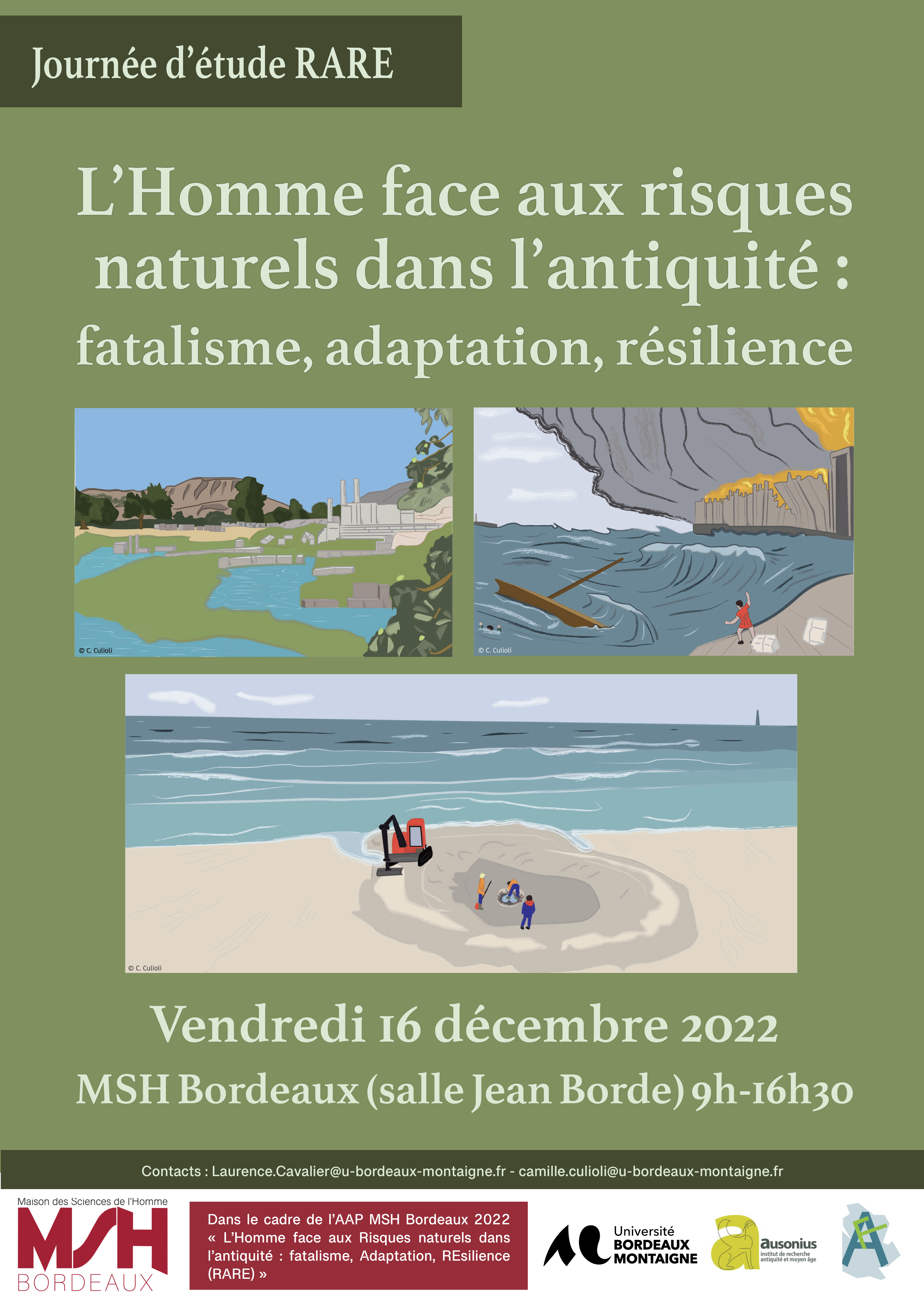
study day : Man faced with natural risks in antiquity: fatalism, adaptation, resilience
MSH Bordeaux, December 16, 2022
“How ancient societies dealt with the siltation of their harbors – the example of Ephesus”
Helmut Brückner, Professor of geomorphology, the Institute of Geography at the University of Cologne, h.brueckner[at]uni-koeln.de
Key words: Ephesus, harbour, siltation, geoarchaeology
The ancient city of Ephesus in Anatolia has experienced many natural disasters in its long history of habitation, the most prominent ones being earthquakes. Especially deadly were those of the 3rd century AD, which even led to the abandonment of parts of the city. However, the hazard which was not a sudden event, but an insidious danger was – in the long run – even more devastating because it turned out to be one of the reasons for the final desertion of the city: the siltation of the harbour. Due to the continued progradation of the delta of the Kaystros river (Cayster; modern Küçük Menderes) and its tributaries the main harbor of the city had to be relocated several times. Very prominent and even nowadays well visible is the meanwhile silted up Roman harbor basin. That it had always been in danger of siltation is evidenced by serval facts: engineers tried to keep the harbor entrance open, but failed; a harbor canal was built in order not to lose direct access to the Aegean Sea; literary sources tell us about dredging and the decree of a governor against the disposal of waste into the harbour. By using the Roman harbor of Ephesus as a geo-bio-archive we were able to demonstrate these measures and reconstruct the siltation history in a multi-disciplinary geoarchaeological research.
